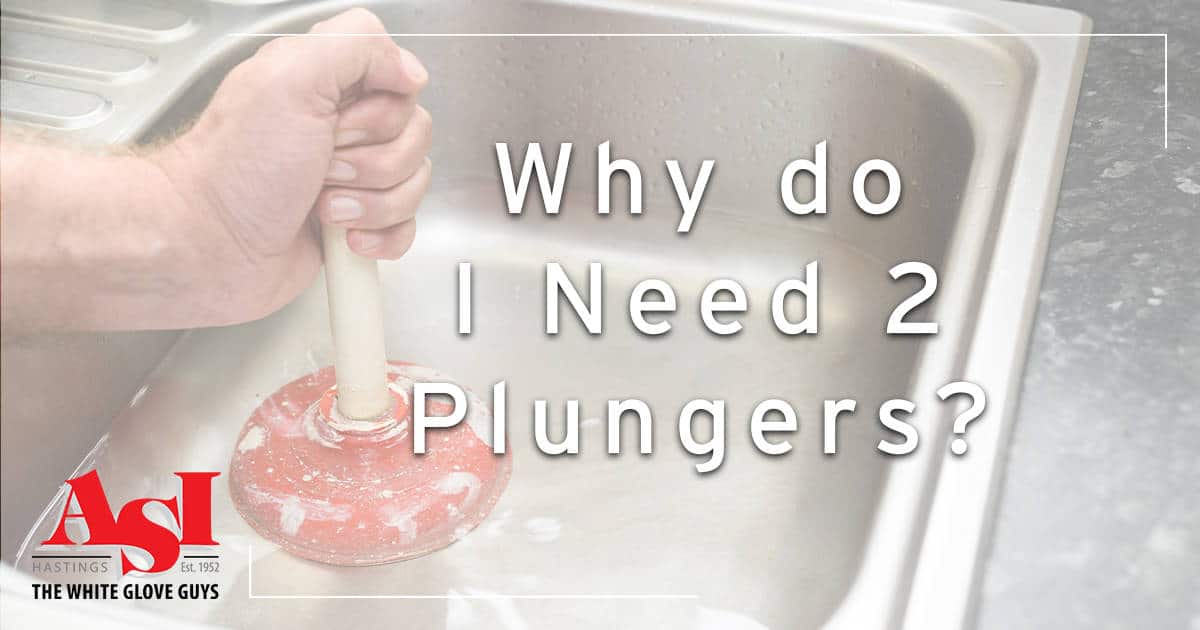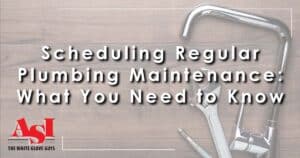A clogged toilet or drain is something that can throw off your entire day. No matter what you’re doing, they need to be fixed. While these aren’t the most glamorous of home repairs, they are simply a part of life.
You are not alone if you had no idea that you need two types of plungers. Since they aren’t a one size fits all tool, we will explain why you need two plungers and how to use them.
How Do Plungers Work and Why Do I Need Two Plungers?
Any plunger works following the properties of basic physics, specifically Boyle’s law. So, what does this mean?
It means when you place a plunger over the opening of a drain opening, you are creating a seal. With pushing, this air-tight seal creates a suction. When you push down you increase the pressure within the pipes.
The suction you created then reduces the pressure and causes the water to rise. It’s fairly easy to know that this process is working because you will be able to feel the tugging on the plunger.
Using a Plunger Properly
It only takes a few steps and a few minutes to put a common plunger to work properly. First, push the cup end of the plunger down the cup against the drain opening.
Then you will either need to press hard pushing down until the rubber cup is flattened or pressing into the drain to force air in.
Once you pull it out, you will create a vacuum which in turn causes a force strong enough to remove the blockage and get things moving again.
2 Types of Plungers: Toilet and Sink
Toilet Plunger
A basic tool for clearing out any clogged toilet is the toilet plunger. A toilet plunger sets itself apart because it has a little rubber cup that comes down from the cap. The cup fits into the toilet drain opening and creates a stronger seal. This plunger makes plumbing maintenance easy and quick.
Keep in mind most toilets end up clogged due to an overuse of toilet tissue. Or by flushing other items that shouldn’t be in the toilet. Some notable clogs can be attributed to menstrual products, “flushable” wipes, and even diapers.
Using a toilet plunger is easy. First, be sure to apply a good amount of pressure to the blockage in the toilet’s U-trap. The U-trap is the curving channel located inside the base of a toilet. This U-trap leads from the toilet hole at the bottom of the bowl to the drainpipe.
Always make sure the toilet bowl has water in it prior to plunging. If not, add some from your sink. Remember that the force you apply here is what will help push the clog out, draining the entire bowl and clog. So, it’s important to put a little muscle into the job.
Sink Plunger
The sink plunger is similar in function to the toilet plunger. However, this plunger is specifically designed to unclog your sink easily and quickly. Sink plungers have a flat cup that create a seal with a flat surface, such as a kitchen sink or shower drain.
Using a sink plunger is just as simple as the toilet plunger, only before starting, remove any sort of sink cover. To ease the process of clearing the clog, add a small amount of water to the sink.
Find the center of the drain and place the sink plunger over the drain. You will want to form a tight seal, just as with the toilet. Be sure to always apply enough force so you can physically feel the seal. Once done, remove the plunger and check the drain to see if the clog is resolved.
When To Call a Plumber
You gave it your best shot to unclog your sink or toilet, but things still aren’t completely clear. No need to worry. A plumbing maintenance professional can help by using more advanced tools to clear the clog.
If you are experiencing other issues such as multiple drains being clogged, you will need to call a plumber. Or if you notice the smell of sewage in your home, a plumber should inspect the issue as it is more complicated.
Dealing with any plumbing issues? Click here or call the number at the top of the screen to schedule an appointment with the experts at ASI.








